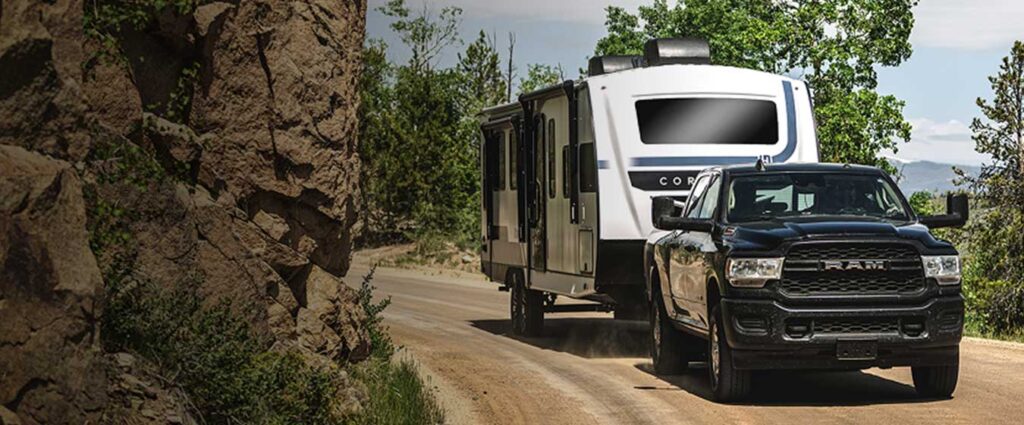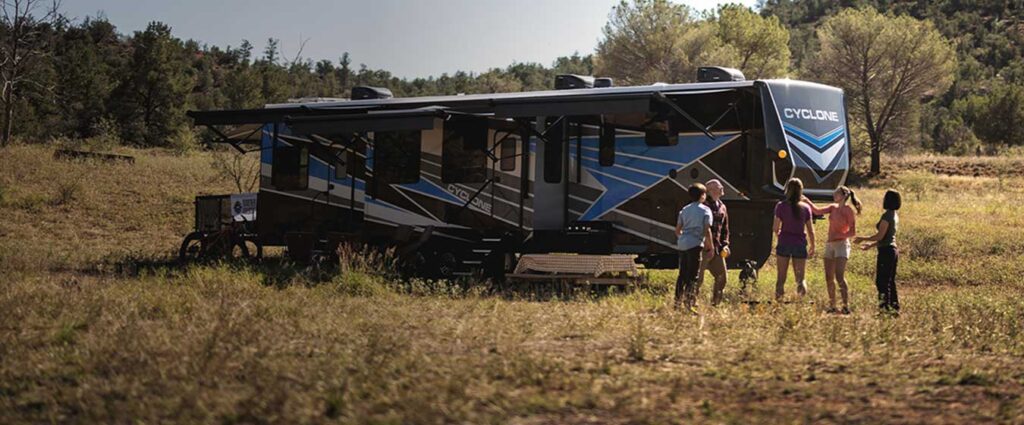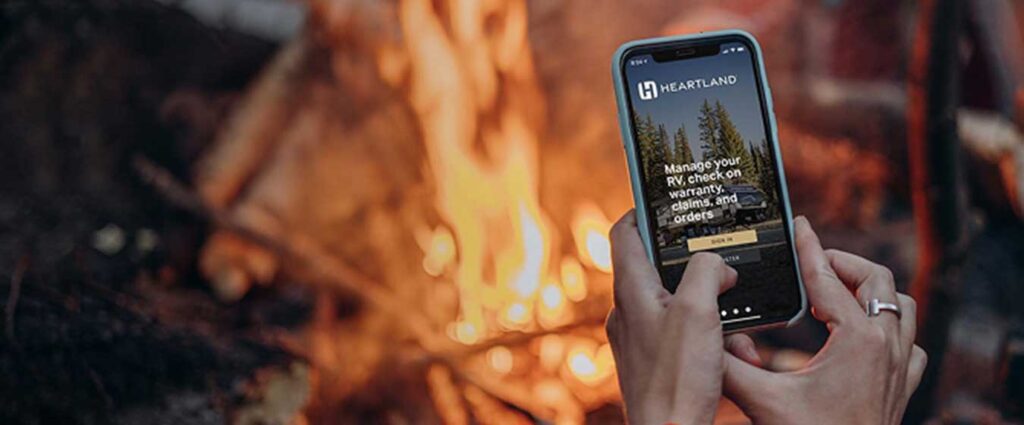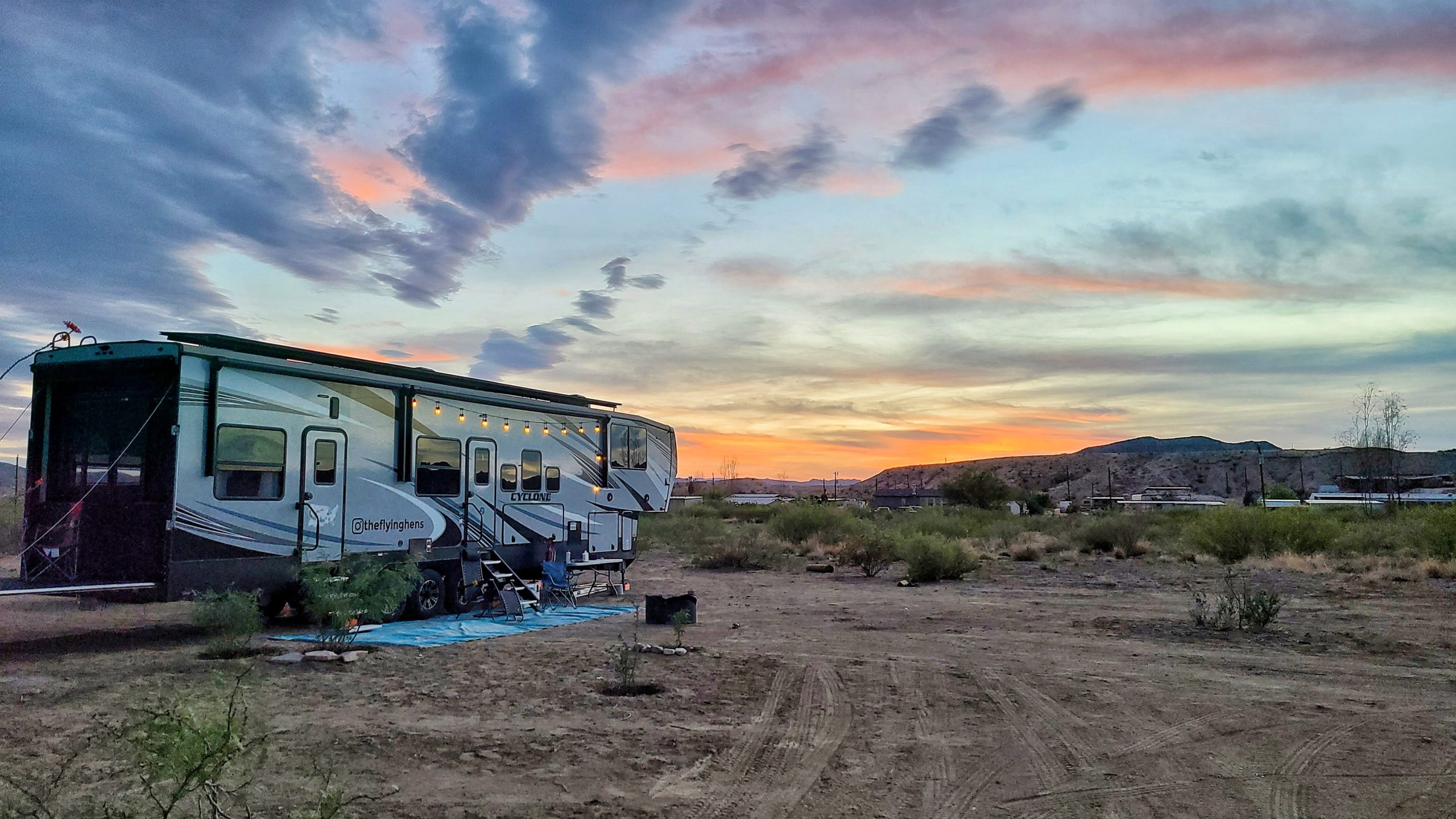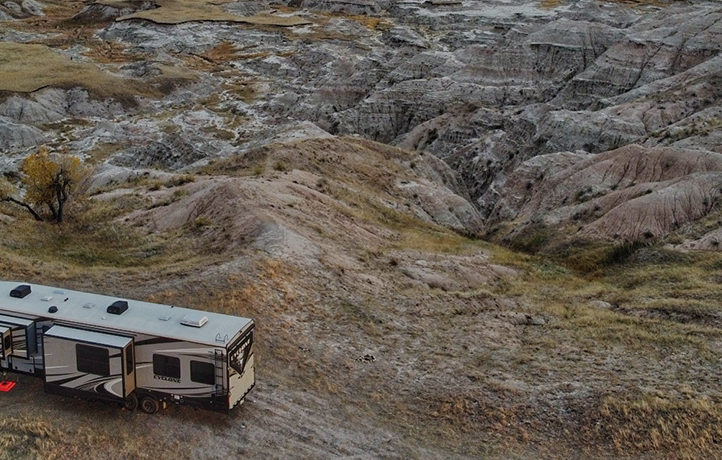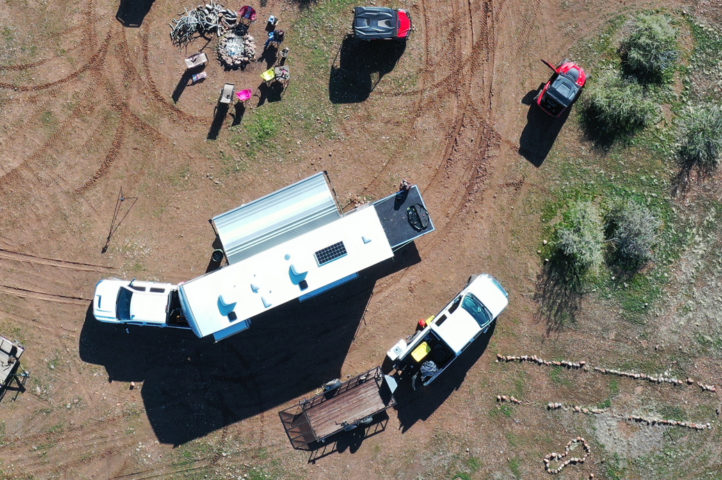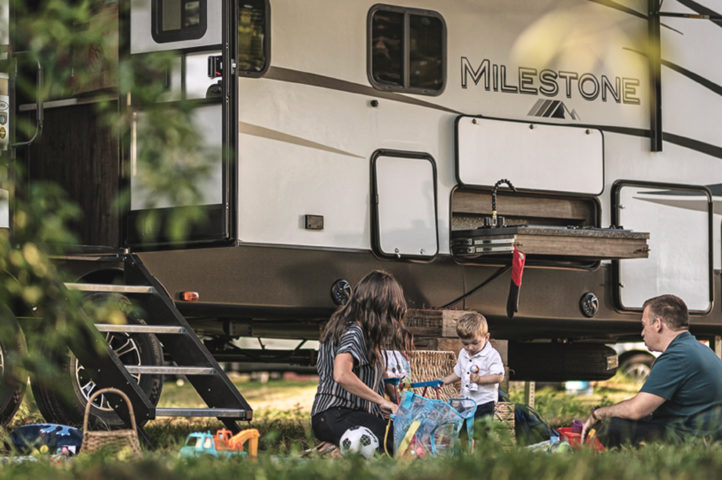In our previous article, we explained what boondocking is and how to find boondocking locations. Now it’s time to take it a step further with the essential items you need to get started.
Almost anyone dry camp for a night or two, but what about boondocking for longer periods of time? Many locations allow you to boondock in one place for up to 14 days. But to camp comfortably without hookups for an extended period of time, you’ll need a few things. This is what we use and how we use them for boondocking.
Power Source
A power source is the number one essential item for boondocking. First and foremost, you’ll need batteries. RV batteries store power to keep your essential items running. You’ll want to have enough battery power to operate things like your fridge, coffee maker, water heater, etc.
Generator
A generator is a great, budget friendly essential item for charging batteries on the RV. Generators run on gas. And because they can be loud, many places don’t allow generators to run overnight. So you’ll need to have enough battery power to keep your essentials running until the morning.
Although some RVs come with a generator, it’s easy to purchase your own. We recommend getting an inverter generator. Without getting too technical, a basic generator is less expensive, but tends to be less consistent (“dirty”) with the power output. An inverter generator provides more consistent, “cleaner” output. Inconsistent power can result in electrical issues with some RVs and many electronics. Which is why it’s a better investment upfront to choose an inverter generator.
The price for an inverter generator can range from about $600 for 2500W to over $1200 for 3500W or more. This is the one we have for our rig.
Note: Always respect local campground rules for generator use wherever you camp.
Solar
Solar power is another option for keeping your RV running off-grid. Some RVs come pre-wired for solar panels. Portable solar panels are convenient but may not be enough power for your RV. If you live just on the basics, portable solar panels may be enough to keep your battery bank charged during sunny conditions. If you prefer to live with more creature comforts and conveniences, you’ll want something more.
To live off-grid with only solar panels, you’ll run all your electronics off your batteries and use solar to recharge them. We will cover the topic of calculating how much solar you need based on your everyday living in a later blog post.
We had our solar installation professionally done by Power Up RV Solar. They provide mobile installation!
Why solar?
A generator is pretty noisy and can distract from the wonderful sounds of nature. Plus, the cost can range from a couple hundred dollars for portable solar panels to $30,000+ for off-grid solar setups with large lithium battery banks.
Looking at the cost of a full solar set up, you can see that why so many people use generators. It’s an economical way to start boondocking or supplement a small solar setup.
Portable Water Bladder and Pump
Access to clean water is critical. Our portable water bladder and pump are essential items that help us keep our fresh water tanks filled without having to move the rig. Sometimes the campground or boondocking site will have water spigots on the property. But other times we have to fill up at a nearby gas station or campground. Always call ahead to campgrounds to ask about fill stations, as sometimes there is a charge.
How it works:
This 60 gallon Water Bladder actually folds up to the size of a book for storage. First, we lay it out flat in our truck bed, and then we fill it from a water source. After transporting it back to the rig, we use this 12 volt water pump to transfer the water into our fresh water tank. Our incredible onboard water filtration system from Clearsource filters the water before consumption. Filling the water tank with our portable water bladder takes about 20 minutes.
Water Filtration System
When you use various water sources in your water tanks, you’ll want a water filtration system. We highly recommend this Clearsource Water Filtration System. It filters water down to .03 microns and even filters out viruses. It’s truly incredible! Because we installed it onto our RV, it provides the cleanest water to every faucet in our rig.
Click here to watch our how-to video about installing our Clearsource Water Filtration system on our RV.
Portable Dump Tank
Remember the movie quote, “Shidder’s full”? Sooner or later, you’re going to need to dump the tanks. We use Campendium to find nearby dump stations. Sometimes campgrounds let you use their dump stations for a fee, but always call ahead.
If you have a prime boondocking spot, you may not want to move the RV. This is where having a portable dump tank is a lifesaver. You can dump grey or black in it, and then haul it to a nearby dump station. You will need to make sure you know how large your grey or black tank is (whichever you are dumping) is the same size as the portable tank (not smaller) or else you may have a really nasty situation. These tanks come in different sizes, but we use this one.
And a Few More Things…
RV Lock
Did you know that many RVs share the same lock and key configuration? When we stay out in the middle of nowhere, we love the added security of our RV Lock. They replaced our factory-grade locks, and they also unlock with a pin pad or a key fob. This is one of our favorite essential items, and you can get one here.
Hitch Lock
Have you ever worried about leaving your rig behind when you want to explore for the day? Have you wondered, will my RV be there when I get back? After all, it’s easy enough to hitch up your rig to move it, so what’s stopping someone from stealing it? Well, this hitch lock guarantees that won’t happen. Now you can explore all day with peace of mind.
Grill/Cooking Grate
You can conserve battery power in your RV by not using electric kitchen gadgets. Instead, plan to cook on a grill or over a campfire. This is a grate option for cooking over a fire.
Wash Basin
This is helpful for washing dishes without putting water into the grey tank. We use our basin from our outdoor kitchen. But this collapsible basin is perfect for storing when not in use. You’ll reuse the dish water from the wash basin for flushing the toilet. We’ll touch more on water conservation in our next blog post in this series.
This article written by Chris and Molly Henard, also known as, the Flying Hens and was originally featured here.
